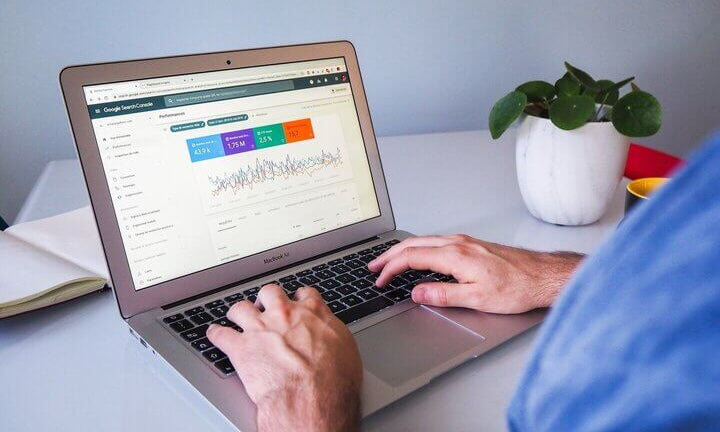Creating a Shopify e-store is advertised online as one of the easiest ways to get started with e-commerce. However, there are always a number of questions that arise when getting started.
- How do I get all product information into Shopify?
- Which payment providers support Shopify?
- How to organize the delivery of orders?
- Which Shopify package to choose?
- How to choose a ready-made user interface template?
- Is Shopify the right e-commerce platform for me?
We generally recommend that you always involve a consultant who is familiar with the platform when creating a new e-shop or changing software. Someone who is familiar with the software will significantly save you time on learning and help you plan logical functionality for the e-shop.
However, we believe that what is advertised about Shopify is true and that anyone can really create an online store on this platform. If only they have the will and perseverance.
What is Shopify?
Shopify Inc. is a Canadian multinational e-commerce company headquartered in Ottawa, Ontario.
Shopify was founded in 2004 by Tobias Lütke, Daniel Weinand, and Scott Lake after they tried to launch an online snowboarding store called Snowdevil. They were dissatisfied with the e-commerce platforms on the market, and with a background as a programmer, Lütke decided to create his own solution. Lütke used the open-source web application framework to build Snowdevil's online store. Ruby on Rails and launched it after two months of development. Seeing that this solution could also be useful to others, the founders of Snowdevil launched a platform called Shopify in June 2006.
On April 14, 2015, Shopify filed for an initial public offering (IPO) on the New York and Toronto Stock Exchanges under the symbols “SHOP” and “SH.” Shopify went public on May 21, 2015, and began trading at $28 during its New York Stock Exchange debut, more than 60% higher than its $17 offering price, with the IPO raising over $131 million for the company.
There are over 1,000,000 online stores in 175 countries using the Shopify platform and have generated over $200 billion in revenue over time.
What to keep in mind when planning a Shopify online store?
- If you are starting a completely new online store on your own and without any previous Shopify experience, then you should rather use the free ones offered by Shopify. user interface templates . Free theme used by many e-shops and information on how to set them up and change them can be found on forums more instructions .
- In addition to the monthly fee, there is also a fee from Shopify for each order. We wrote here how to choose the right Shopify package for your e-store .
- If you plan to have your Shopify e-store also to parcel machines If you want to offer delivery, you need an app that offers additional functionality. You can find the solution we created here .
- You can find a large number of them in the Shopify app store . additional functionality We also occasionally write summaries and recommendations about some apps .
- Think carefully about your future customer personas. If during planning it becomes clear that there are multiple target countries for your e-store, carefully consider creating multiple different Shopify installations or e-stores. Several different e-stores and domains significantly enables more precisely different markets to aim .
Try the Shopify platform for 14 days free!
What payment methods can be offered to customers in a Shopify e-store?
As of today, all major payment options in neighboring countries are available on the Shopify platform. As a merchant, you can offer your customers payment via bank link, credit card, or invoice, or transfer. However, for the first two payment methods, you should use an intermediary service.
In the Baltics, the good old bank link service is offered OPAY , Paysera, Maksekeskus and, as a newcomer, Luminor. Luminor's payment environment is a payment initiation service for other banks, which is very similar to a regular bank link for the customer.
We previously provided a more detailed overview of the comparison between OPAY and Maksekeskus. “Comparison of Shopify Estonian payment methods” . In summary, it can be said that OPAY is significantly more advantageous for the merchant and the user interface is also more logical for the customer than that of Maksekeskus.
If you are targeting your online store to regions further away than the Baltics and Finland, it is always worth investigating which payment methods are preferred in the target region. In the case of credit card preference, it is worth Stripe look towards this service provider, because it has a competitive service fee for the merchant, a more convenient user interface, and a payment app that is well integrated with Shopify. The app should be in Estonian.
Estonian, Latvian and Lithuanian payment methods on the Shopify platform
In Estonia, Latvia and Lithuania, customers are still used to paying for their payments with a bank link. Payment service intermediaries are also trying to cover the entire market in the same way. One important difference in the Baltic market is that in Lithuania, people are also used to paying in cash directly to the courier upon receiving the package.

*The e-shop in the picture uses OPAY and Stripe
- OPAY
- Paysera payment gateway
- Payment center
- Stripe
Finnish payment methods
In Finland, similar to consumers in the Baltics, customers are used to paying for their orders immediately and mainly use a bank link to do so. However, significantly more payments are made using a credit or debit card.

* Data comes from the “Europe 2020 Ecommerce Region Report”.
In Finland, the following payment service providers can be used for Shopify.
- Paytrail taxable
- Klarna
- Checkout.com
- Paysera payment gateway
- Payment center
- Stripe
Swedish payment methods
In Sweden, significantly more payments are made after receiving the package, which is facilitated and simplified by the very popular Klarna payment service provider in Sweden.

* Data comes from the “Europe 2020 Ecommerce Region Report”.
- Paytrail taxable
- Klarna
- Checkout.com
- Paysera payment gateway
- Stripe
Norwegian payment methods
Considering that Paypal is also primarily a credit card payment method, it can be said that almost all payments for Norwegian customers are made using credit or debit cards.

* Data comes from the “Europe 2020 Ecommerce Region Report”.
The following payment providers can be used for Shopify in Norway.
- Paytrail taxable
- Klarna
- Checkout.com
- Paysera payment gateway
- Stripe
Try the Shopify platform for 14 days free !
How to arrange delivery of goods?
Delivering ordered goods may not always be the first problem that a new e-merchant thinks about. However, arranging delivery can become a major stumbling block if the first major campaign results in significantly more orders than usual from the e-store.
In most cases, the initial decision is to manage orders manually, and when the workload increases exponentially, an automated solution is quickly sought.
In general, the methods of organizing the delivery of physical products can be divided into three groups:
- Manual management
- Semi-automated solution
- Fully automatic solution
Manually manage orders
If you do everything manually, after verifying the order payment, you must manually enter the delivery details into the delivery service provider's self-service, download and print the parcel label, and stick it on the parcel.
After the package is fully prepared, you can hand it over to the service provider or, for example, send it from a parcel machine to a customer's parcel machine.
Even when managing orders manually, the customer should still be able to select the correct parcel locker location or enter the exact delivery address when completing the purchase. For Shopify, you can ensure the correct parcel locker selection with our Parcely solution.
Semi-automatic order management
Any kind of work automation makes a merchant's life easier, and semi-automatic order management saves a lot of time.
In this type of solution, the customer usually selects the exact delivery method of the service provider, either a parcel terminal, a post office or a courier service. After placing the order, the delivery data is automatically transferred to the service provider's system. All you have to do is print out the parcel label, stick it on the parcel and send the goods.
Fully automated order management solution
A solution can be considered fully automated if, as a merchant, you don't "see" your products at all and you don't issue packages yourself. All of this work is done for you by a partner.
You can set up such an automatic solution, for example, using Pakipoint 's full service. Your products would be in Pakipoint's warehouse, orders would automatically move from the Shopify e-store to Pakipoint's self-service, where a Pakipoint employee would generate a parcel card, assemble and pack the order, and issue it directly to the customer. Pakipoint has contracts with delivery service providers and can offer better delivery prices due to larger volumes.
Fully automatic fulfillment and print on demand There are other service providers. Delivering packages on a larger scale is a time-consuming task and we recommend that you purchase it as a service from a good partner.
How to save time when managing products?
Before starting to manually enter products, it would be wise to plan exactly which products will be in the online store and how you will enrich the products with data.
The following questions should be considered:
- Does the online store only have simple products, or should the customer also be able to choose the size, color, material, or other specifications of the products?
- Will there be information on the products (tag, vendor, etc.) that can be used to automatically assign the product to a category (group, collection)?
- What filtering options should a customer have in product collection views?
- Can the customer view the product through video in addition to images?
- In addition to physical products, does the online store also offer virtual products such as gift cards, e-books, etc.?
- Do you plan to manage product inventory in your online store or will you sell products without taking inventory into account?
- Do you need to see your e-store's profits with Shopify reports?
In the header of the Shopify product management view, you will find Duplicate button, which allows you to make a copy of an old product. This way you can quickly create similar products.
Use Shopify's export/import functionality
It would be a good idea to create a few sample products in your Shopify e-store and then export the products in csv format. You can easily open the downloaded file using, for example, Google Doc and add the missing products to the table more quickly.
After adding all the products to the table, you can download everything from the Google doc to your computer again and upload it to your Shopify e-store. By editing the product data in this way, you can get to the e-store much faster and avoid the time-consuming process of moving between different products.
Some tips on how to make your life easier on Shopify?
- Create a copy of your theme before installing any app. Some apps install code in the UI files, which can sometimes be difficult to remove without a copy.
- Use Shopify's import/export functionality to update various data.
- Find an assistant/consultant who can give you advice.
- Remove apps that you don't plan to use in the near future. The fewer apps you have running at once, the less likely there will be a conflict.
- In some cases, it makes more sense to ask a Shopify developer to develop additional functionality rather than using an app.



